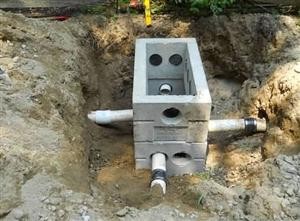Bacteria and Enzymes in Your Septic System
 What makes a septic system work properly? Billions of naturally occurring microscopic bacteria and enzymes are responsible for a major part of the three-stage treatment that processes wastewater in a septic system.
What makes a septic system work properly? Billions of naturally occurring microscopic bacteria and enzymes are responsible for a major part of the three-stage treatment that processes wastewater in a septic system.
The wastewater in the septic tank begins the process of decomposition by separating into layers. Bacteria, which is naturally present in all septic systems, will begin to digest the solids which have settled to the bottom of the tank. These naturally occurring bacteria will change up to 50% of these solids into liquids and gases.
There are all kinds of additives on the market advertised to improve the biological environment of your septic system, but most experts agree that they are not needed. The best plan is to keep high doses of cleaners and bleaches out of your septic system which can kill off the beneficial bacteria.
Another important part of the process occurs in the drainfield. The effluent, or wastewater from the septic tank enters the drain or leachfield and comes into contact with the biomat. There are organisms living in the biomat which further digest the organic matter in the effluent and from there it reaches the soil where the last part of the process occurs. Bacteria in the soil further treat the waste. It is important that the drainfield not be flooded. Many of these bacteria found in the soil and biomat are aerobic or oxygen dependent. If water floods a drainfield, they may die off and will not be replenished until the flooding is relieved.
Septic Preservation Services can answer all your septic system questions. Call them at 877-378-4279 or visit www.septicpreservation.com










